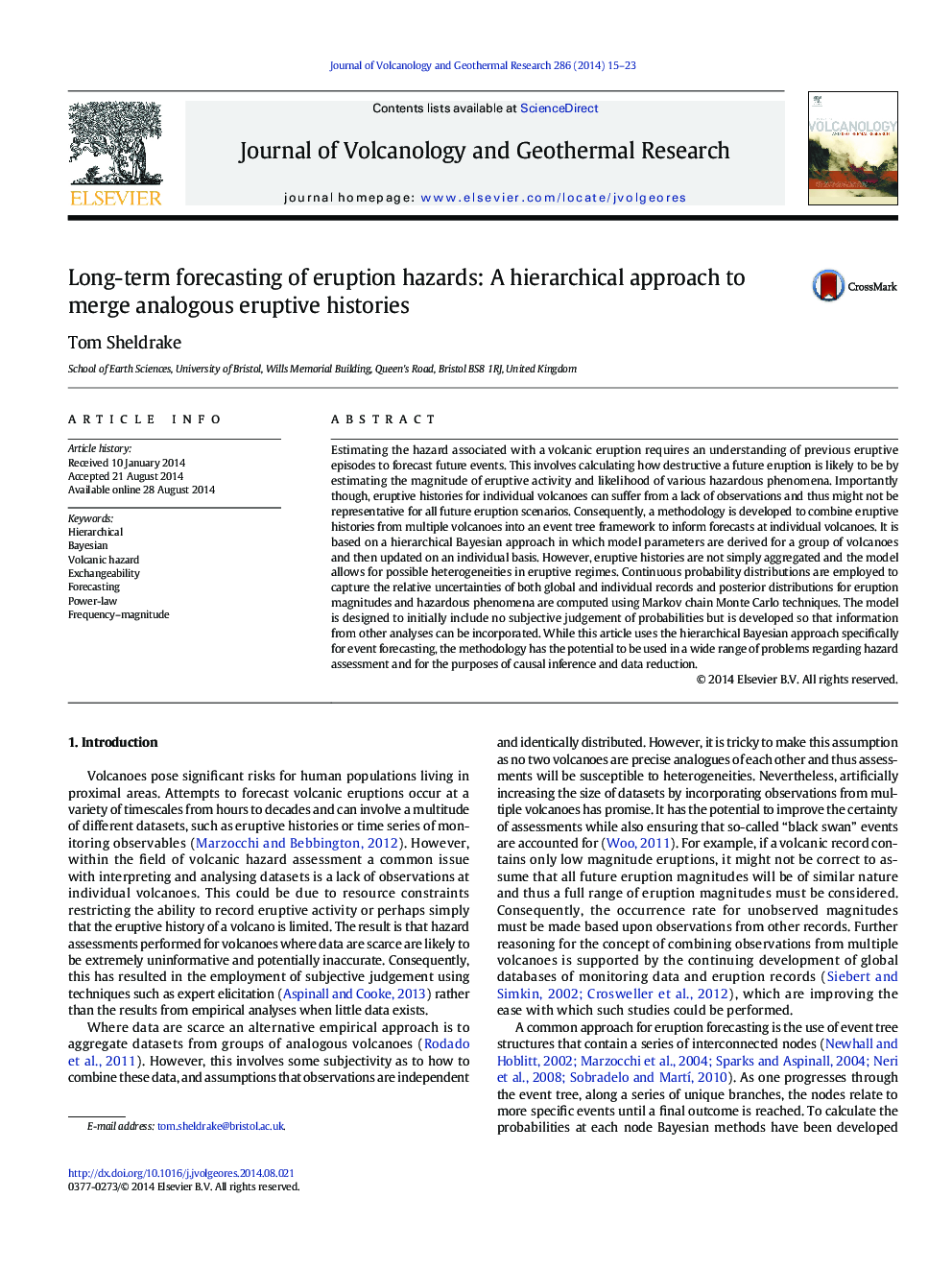| Article ID | Journal | Published Year | Pages | File Type |
|---|---|---|---|---|
| 6439652 | Journal of Volcanology and Geothermal Research | 2014 | 9 Pages |
Abstract
Estimating the hazard associated with a volcanic eruption requires an understanding of previous eruptive episodes to forecast future events. This involves calculating how destructive a future eruption is likely to be by estimating the magnitude of eruptive activity and likelihood of various hazardous phenomena. Importantly though, eruptive histories for individual volcanoes can suffer from a lack of observations and thus might not be representative for all future eruption scenarios. Consequently, a methodology is developed to combine eruptive histories from multiple volcanoes into an event tree framework to inform forecasts at individual volcanoes. It is based on a hierarchical Bayesian approach in which model parameters are derived for a group of volcanoes and then updated on an individual basis. However, eruptive histories are not simply aggregated and the model allows for possible heterogeneities in eruptive regimes. Continuous probability distributions are employed to capture the relative uncertainties of both global and individual records and posterior distributions for eruption magnitudes and hazardous phenomena are computed using Markov chain Monte Carlo techniques. The model is designed to initially include no subjective judgement of probabilities but is developed so that information from other analyses can be incorporated. While this article uses the hierarchical Bayesian approach specifically for event forecasting, the methodology has the potential to be used in a wide range of problems regarding hazard assessment and for the purposes of causal inference and data reduction.
Related Topics
Physical Sciences and Engineering
Earth and Planetary Sciences
Geochemistry and Petrology
Authors
Tom Sheldrake,
